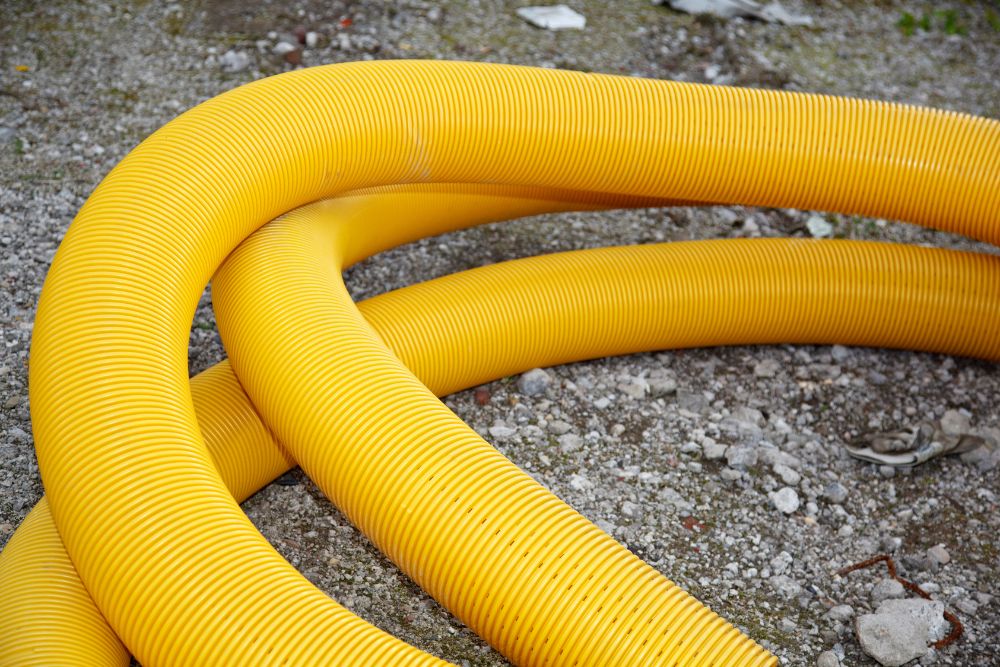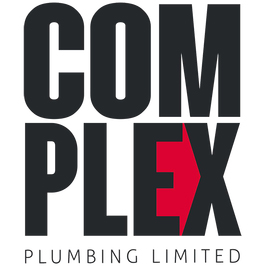
Fixing issues with drainage coil pipes on a slope requires a comprehensive understanding of the problem and the appropriate solutions. This guide provides a systematic approach to identify and fix these issues, ensuring your drainage system functions optimally.
We will explore the preparation of the slope, selection of suitable materials, and the application of effective techniques.
We’ll also delve into preventive measures to mitigate future problems. Whether you are a homeowner seeking to protect your property from water damage or a drainage professional wanting to refine your skills, this guide offers valuable insights into fixing drainage coil pipes on a slope.
Key Takeaways
- Drainage coil pipes are flexible and resilient components of a drainage system on a slope, designed to withstand freeze and thaw conditions without cracking.
- Recognising signs of drainage issues, such as water pooling and cracked pipes, is crucial before fixing drainage coil pipes on a slope.
- Trapped water, excessive dirt buildup, and freezing temperatures can lead to pipe damage and structural issues, emphasizing the need for prompt action.
- Proper preparation, high-quality materials, and regular maintenance are essential for the longevity and efficiency of the drainage system on a slope.
Understanding Drainage Coil Pipes
The majority of drainage coil pipes, renowned for their flexibility and resilience, are vital components in creating an effective and efficient drainage system on a slope. These types of pipes are particularly recommended for use in such systems due to their ability to withstand freeze and thaw conditions without cracking, a feature that sets them apart from PVC pipes.
The drainage system’s primary purpose is to address issues of water trapping and damage on a slope, such as those seen around the house. To this effect, a trench approximately 16 inches wide and 14-18 inches deep is dug with a slight pitch. The system is designed to end at a sump pit, which helps avoid water buildup and subsequently reduces the wear and tear on the sump pump.
Additionally, the drainage system is equipped with the Bad Seed system, which includes a pump and a heater for freezing temperatures. Specific instructions on operating this outdoor sump pump system without check valves are provided to prevent the freezing of the discharge line.
Identifying the Problem
Before embarking on the task of fixing drainage coil pipes on a slope, it is crucial to first identify the underlying problem.
This involves understanding the signs of drainage issues, recognising symptoms of pipe damage, and assessing the impact of the slope on these problems.
Precise identification will not only guide the repair process but also inform the prevention of future complications.
Recognising Drainage Issues
In terms of effective water management, identifying drainage issues is the initial step towards rectifying potential damage caused by improperly installed coil pipes on a slope. To facilitate recognition of such problems in your drain system, consider the following:
- Water pooling: This is indicative of a faulty drain system and can cause damage to building materials or result in wall rot.
- Cracked pipes: PVC pipes, often used in shallow drainage systems, are susceptible to cracking due to freeze-thaw cycles.
- Improper trenching: A trench without a slight pitch, not ending at a sump pit, can lead to inefficient drainage.
These signs should alert homeowners to potential issues, enabling necessary preventative or corrective measures.
Symptoms of Pipe Damage
Identifying pipe damage often begins with recognizing certain symptoms that indicate a compromised drainage system. Damages can occur due to freezing temperatures, excessive dirt buildup, and poor pitch in the trench. All these factors can critically affect the performance of your drainage system, including sump pumps.
To make it easier, let’s categorize the symptoms of pipe damage:
| Symptoms | Possible Causes | Impact |
|---|---|---|
| Trapped Water | Poor trench pitch | Reduced efficiency of sump pumps |
| Rotted Materials | Excessive dirt buildup | Structural damage |
| Cracked PVC Pipe | Freezing temperatures | Failure of drainage system |
These symptoms should prompt immediate action to prevent further damage and protect your home investment. Always prioritize fixing any noticeable pipe damage promptly.
Determining Slope Impact
While addressing drainage issues, it is imperative to understand the impact of the slope as it often plays a significant role in the overall effectiveness of the drainage system. The slope directly affects three key areas:
- Water Direction: A sloping terrain can alter the water’s course, leading to problematic pooling near your house or garage.
- Material Deterioration: Excessive moisture due to poor slope impact can result in substantial damage to building materials, causing rot and decay.
- System Failure: Shallow systems like french drains may fail in freezing temperatures, highlighting the importance of considering the slope when designing a drainage system.
Identifying the problem is the first step towards a solution. Thus, understanding the role of the slope is crucial for any drainage system repair.
Gathering Necessary Tools
Before commencing any drainage coil pipe repair on a slope, it is crucial to gather all the necessary tools. This will encompass essential plumbing tools, which will be detailed in the following section.
Additionally, the importance of protective gear and how to select quality materials will be explored.
Essential Plumbing Tools
To effectively fix drainage coil pipes on a slope, it is imperative to gather the necessary plumbing tools. These tools not only ensure that the job is done correctly, but also significantly reduce the risk of injury and avoidable mistakes.
- Trenching Shovel: This is used to dig the 16-inch wide trench around your house. Make sure it’s sturdy and comfortable to use.
- Pipe Cutter: A high-quality pipe cutter is essential for cutting the virgin corrugated pipe to the required size.
- Sump Pump: Since the outdoor sump pump pit will have two pump systems, ensure that you have a reliable and powerful sump pump.
These tools are essential for fixing drainage coil pipes on a slope. Make sure you have them before starting the task.
Protective Gear Importance
A significant amount of protective gear is imperative when undertaking a project to fix drainage coil pipes on a slope, as it ensures safety and minimizes the risk of injuries during the process. It’s crucial to pay attention to the type of protective gear necessary for each stage of the project, from digging the trench to handling the pipes and the sump pump discharge line.
The following table illustrates the importance of protective gear:
| Task | Protective Gear |
|---|---|
| Digging Trench | Gloves, Safety Glasses |
| Handling Pipes | Sturdy Boots, Work Gloves |
| Handling Dirt Buildup | Dust Mask, Work Gloves |
| Sump Pump Discharge Line | Work Gloves, Safety Goggles |
| General | Sturdy Boots, Safety Glasses |
Properly gathering these necessary tools and gear significantly enhances safety and reduces potential accidents.
Selecting Quality Materials
In the process of fixing drainage coil pipes on a slope, it’s essential to select and gather high-quality materials and tools, which can significantly influence the success and durability of the project. Choosing quality materials ensures the longevity, durability, and efficiency of your drainage system, protecting your home investment from potential water damage.
- Virgin corrugated pipe: Recommended over black corrugated pipe with recycled material, it offers superior resilience against freezing temperatures.
- The Bad Seed system: This system includes a pump and heater, ensuring efficient drainage in cold weather.
- Outdoor sump pump: Detailed instructions on running this system without check valves guarantees a successful drainage system.
Preparing the Slope for Repair
Before initiating the repair process, it is crucial to adequately prepare the slope to ensure the effective fixing of the drainage coil pipes. The first step is to dig a 16-inch wide trench around the house. This trench should have a slight pitch to guide the water flow towards the sump pit. The trench’s endpoint will be the sump pit, designed to direct water out of the pipe, preventing water trapping and damage.
When preparing the slope, weather conditions should be taken into account. For instance, in cold conditions, specific instructions on running the outdoor sump pump system without check valves are provided to prevent freezing and ensure proper drainage.
The outdoor sump pump pit should have two pump systems to efficiently manage water flow on the slope. The dual pump system ensures the slope remains dry and free from excess water, thus preventing damage to the drainage coil pipes.
This preparation process is designed to protect the investment in your home and address the drainage issues on the slope, ensuring a more effective and long-lasting repair of the drainage coil pipes.
Fixing the Drainage Coil Pipes
Once the preparation phase is complete, the focus shifts to the actual process of fixing the drainage coil pipes on the slope. This critical task is not as daunting as it may seem, especially when broken down into manageable steps.
Laying the Coil Pipes:
Begin by carefully laying the corrugated pipes along the trench. Remember, these pipes are preferred over PVC in shallow systems to prevent cracking in freezing conditions. Ensure the pipe’s slope ends at the sump pit to prevent water pooling in the pipe.
Installing the Bad Seed Systems:
Proceed to install the Two Bad Seed systems. One should include a pump and heater to counter freezing temperatures and extend the life of your sump pump.
Final Inspection:
Once the pipes and systems are installed, conduct a thorough inspection. Make sure there’s no water trapping between the garage and the house.
Checking for Proper Drainage
After successfully installing the drainage coil pipes and systems, it becomes crucial to verify their proper functioning and assess the efficiency of the drainage. This not only ensures effective water flow but also safeguards the building materials from potential damage due to dirt buildup or excess water accumulation.
The first step in checking for proper drainage is to observe how much water is being effectively channeled away from the house and garage during a typical rainstorm or after manually pouring water into the system. This observation should be done along the entire length of the trench, ensuring that water flows smoothly towards the sump pit.
If the water flow is not consistent or if there is standing water, adjustments may be required. This could involve correcting the slope of the trench or addressing issues with the sump pump systems.
Moreover, it is also important to monitor the sump pump discharge line, especially during freezing temperatures, to prevent blockages and ensure successful water discharge. Regular checks and maintenance, as well as adherence to the provided specific instructions and tips, will ascertain the longevity and efficiency of your drainage system.
Preventing Future Drainage Problems
The implementation of preventative measures can significantly reduce future drainage problems, ensuring the longevity and functionality of your drainage coil pipes on a slope. By taking proactive steps, you can avoid any issues that may compromise the system’s efficiency.
- Use a French Drain: A French drain can significantly reduce water trapping between the garage and the house. This system allows water to filter down through several layers of gravel and into a drain pipe, directing it away from the property.
- Install a Bad Seed System: For efficient drainage, consider installing a Bad Seed system. Equipped with a pump and a heater, this system can withstand freezing temperatures, reducing wear and tear on the sump pump.
- Choose Reliable Materials: Be wary of the failure of shallow systems in freezing temperatures and opt for virgin corrugated pipe for reliability. This material is known for its durability and can withstand extreme weather conditions.
Digging a 16-inch wide trench with a slight pitch around the house, leading to an outdoor sump pump pit with two pump systems, can also be beneficial. It’s important to follow specific instructions for running the sump pump discharge line to protect your investment.
Need Help With Your Drainage Problems?
Give us a call now on 022 444 6474 or email info@complexplumbing.co.nz.

